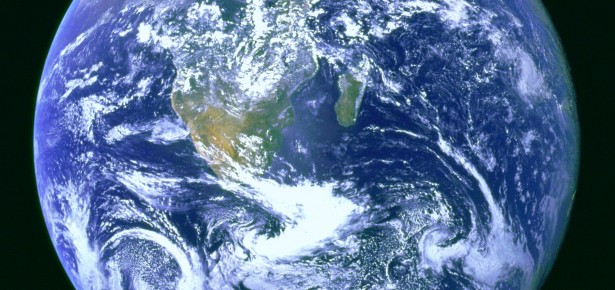
In short, then, it takes the whole region to make the city.—Patrick Geddes, Cities in Evolution, 1914
But for all our buildings and lights and roads, for all our signs and words, that human presence is only a thin film stretched over mystery. Let sunlight flame in a blade of grass, let night come on, let thunder roar and tornado whirl, let the earth quake, let muscles twitch, let mind curl about the least pebble or blossom or bird, and the true wildness of this place, of all places, reveals itself … —Scott Russell Sanders, Staying Put: Making Home in a Restless World, 1993
Imagine a glorious day in your favorite city being energized at every turn. Sparkling clear air. Hardly any traffic. People alive, interesting. Appealing architecture and gardens. Amazing cultural events. Delightful diverse shopping. Food the best. Saw everything … relished it all.
Suddenly a friend appears, an ecologist. Comparing notes, she or he is equally enthusiastic. Luxuriant native street trees with lots of lichens. Clear water in the city pond. Bicycle routes and long walking routes busily used. Songbirds zipping along a shrubby tree strip between parks. No dog droppings. Wind blowing the smokestacks’ noxious air out of the city. Green walls and
balconies facing each other over streets. Restaurants with rat-proof dumpsters. Elongated grass-and-flower depressions for riverside floodwaters. The intriguing list goes on. Chuckling, together you have seen almost everything, yet seemingly in two different cities.
But what about the invisibles? The what? We saw “everything” but maybe we missed some important things. For instance, in this urban ecology no-one directly sees the sounds and vibrations around us. The smells and gases we breathe are invisible. Turbulent and streamline air flows hit us unseen. We do not see what happens in tree canopies over us, on the roofs of buildings, or in the atmosphere with organisms further overhead. Nor is the soil just under us visible, the deeper underground infrastructures, the fish movements in the river, the river bottom, or the far side of the city. Indeed, we cannot even see the multitude of microbes right around, on, and in us. We mainly miss the active organisms and processes at night. And we do not have the time or patience to see the really slow flows and slow changes eternally occurring around us.
Interesting, but are all those things important compared with what we see? Well, consider a few examples. Up in that atmosphere, pollen and seeds and even spiders with tiny parachutes move across the city, ozone smog forms, and sky radiation is generated. The tree canopies contain bird nests and numerous insects, and evapo-transpire water to the air. Traffic noise inhibits successful avian reproduction, while vibrations from traffic and trains compact soil. Soil itself is a cornucopia of roots, microbes, and soil animals, with water and oxygen flowing downward, and carbon dioxide upward. The underground urban infrastructure contains raceways for cockroaches and rats to reach buildings, as well as stormwater and sewage wastewater to enrich water bodies. Underwater fish are feeding, being eaten, even migrating. Harbor and river bottoms boast a rich interacting mix of sediment, worms, pollutants, carbon dioxide, even sometimes oxygen. At nighttime, migrating songbirds are hitting towers and skyscraper windows, cats are roaming, slugs are eating plants, nighthawks are catching insects, and garbage is being ravished. Slow flows and changes are also really hard to see – plants growing, termites chewing, water-table dropping, species diversity changing, plants adapting, pests becoming pesticide resistant, species ranges expanding, pipes rusting, wood foundations decaying, and sea-level rising. While the list of invisible organisms, interactions and processes could go on and on, do these examples seem important ecologically? And for society?
Let’s find a little restaurant with something to drink and explore this urban ecology a bit more. Maybe a book on the subject would highlight lots of invisibles and visibles, opening doors to insight and delight all around us. Indeed, these revelations could be foundations for making where we live much better.
We have just become an urban species, Homo sapiens “urbanus.” Half the human population now lives in urban areas. The proportion grows, and the number of urbanites skyrockets. The next two billion people will all be urban, half joining today’s urban poor. These newcomers will squeeze in now within a single generation. How welcoming is our land, our urban space, our planet?
Meanwhile two mammoth changes are engulfing us. First urbanization, the “urban tsunami,” easily visible today, sweeps swiftly and powerfully across the land. Seemingly inexorable, yet not. And second, natural systems degrade – freshwater dries up, biodiversity plummets, climate changes, soil thins, and unpolluted places disappear. Two familiar drumbeats. We pick at
the problems. Or simply shrug, and consider them too large, too complex to solve.
Addressing such trajectories requires understanding of natural areas, forestry areas, agricultural areas, and dry areas of the globe. Ecologists for over a century have analyzed and educated us about natural systems there. Yet the overlooked ecology of built areas has now emerged as of core importance. Urban ecology is the ecology of right where we live.
Download the full excerpt here.
Latest Comments
Have your say!